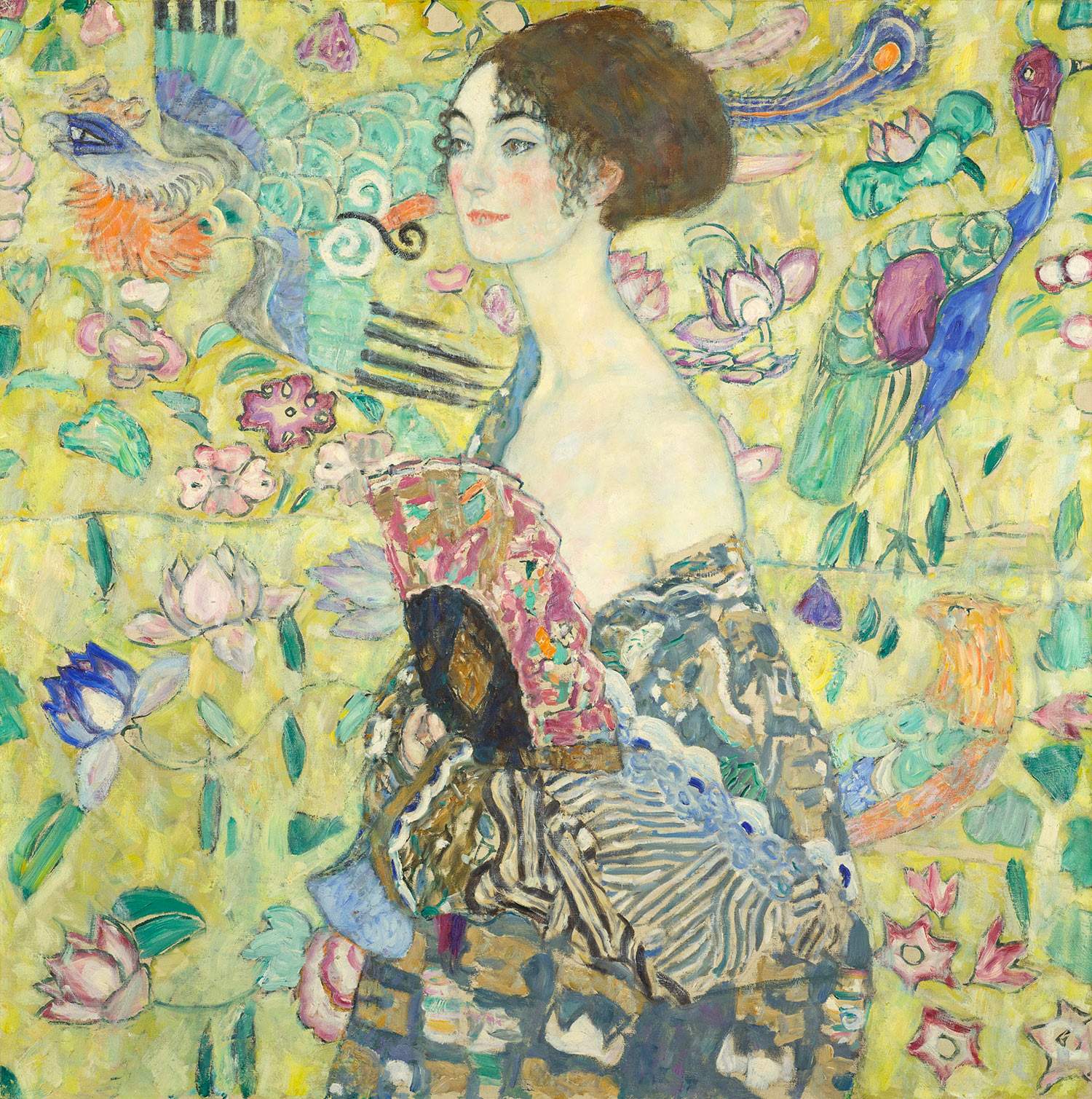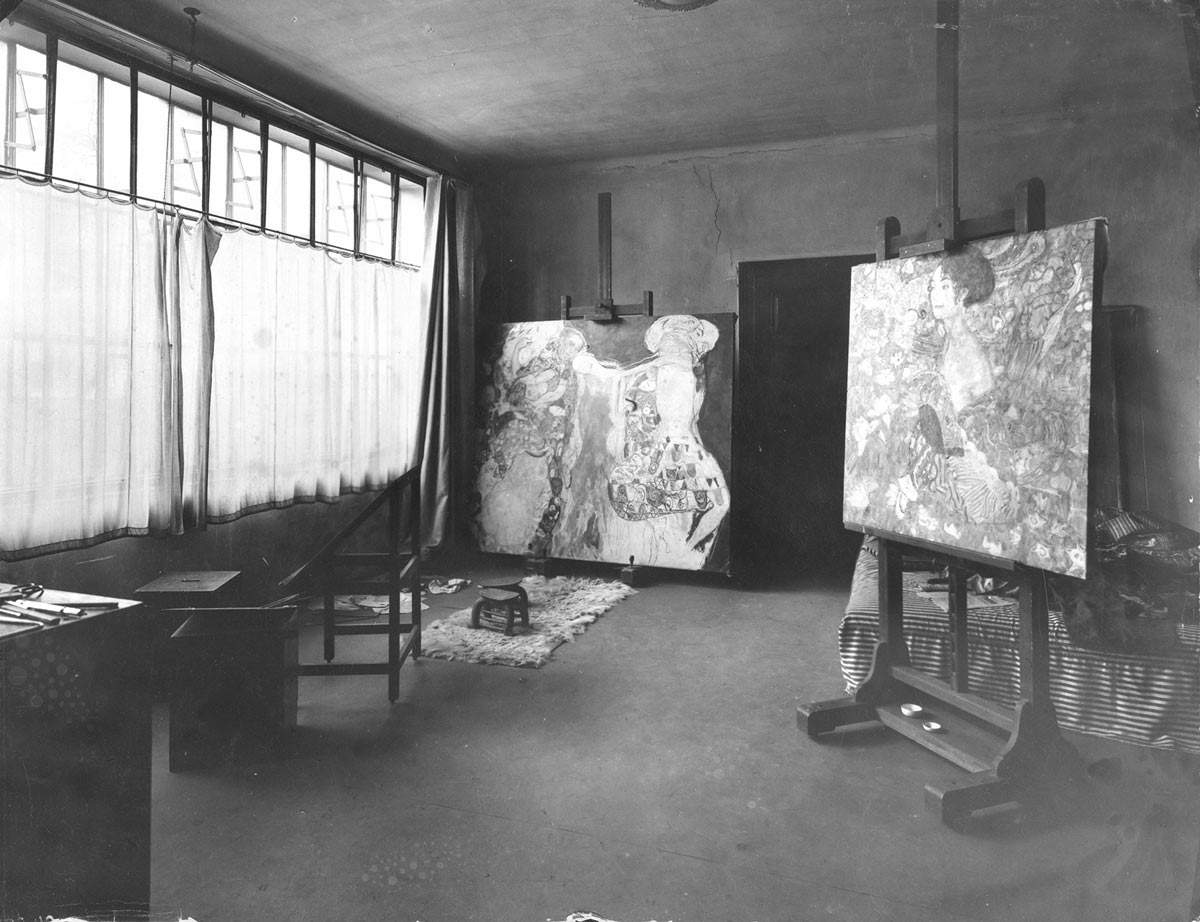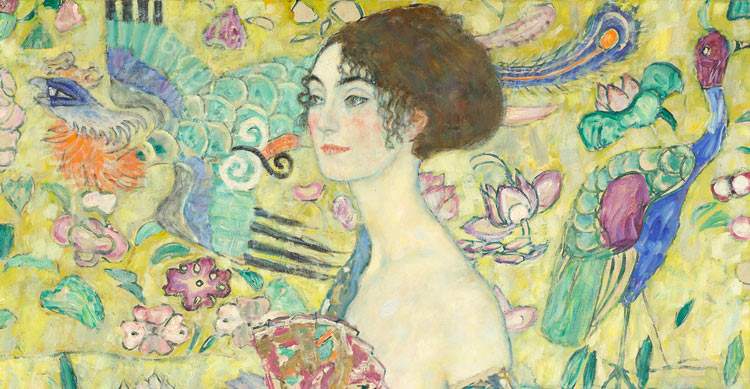Outstanding at Sotheby's, Klimt's last portrait goes up for auction: the Lady with the Fan
An exceptional sale at Sotheby’s in London next June 27: the Lady with the Fan, the last portrait painted by Gustav Klimt (Vienna, 1862 - 1918) before his untimely death, when he was still in his artistic prime and producing some of his most innovative works, will go up for auction. Many of those works, including the portraits for which he is best known, were commissioned paintings, but in this case it is something entirely different, as Helena Newman, Sotheby’s president and head of impressionist and modern art for Europe and the world, explains: “a technical tour de force, full of experimentation that pushes the envelope, as well as a sincere ode to absolute beauty.” The work will go with an estimate of about 65 million pounds (76 million euros).
The Lady with the Fan is one of the most important works to end up at auction in Europe in recent times. The work, moreover recently exhibited in Vienna, was still standing on an easel in Gustav Klimt’s studio at the time of the artist’s untimely death in February 1918. It is a beautiful, rich and fascinating portrait of an unnamed woman, bringing together all the defining characteristics of Klimt’s work. The formality that often characterized his commission-painted portraits here gives way to a new expressiveness, for a deeper immersion in color and form, which (though clearly influenced by his contemporaries Van Gogh, Matisse and Gauguin) became something entirely different in his hands. Whereas slightly earlier works from Klimt’s famous “golden period” (such as the famous 1907 portrait of Adele Bloch-Bauer) see their subject presented as an icon amidst a tapestry of golden forms, here the subject almost dissolves into the background.
Klimt first began working on the Lady with the Fan in 1917, a time when he was among the most celebrated portrait painters in Europe: commissions came thick and fast, and the artist was able to command much higher prices than any of his contemporaries. But this is a rare work, painted by the artist only for his own sake. Full of freedom and spontaneity, the painting reflects Klimt’s joy in painting it and in celebrating beauty in its purest form. The work also reveals his innovative approach: traditionally, portraits were-and still are-painted in the typical vertical format. Here, Klimt returns to the square format he used for his avant-garde landscapes at the turn of the century, giving this painting a modern twist. In addition, the artist here also gives full expression to his fascination with Chinese and Japanese art and culture. It is known that his favorite clothes were luxurious silk kimonos and Chinese robes, and his home abounded with beautiful objects from the East. Egon Schiele describes it thus, “the drawing room [was] furnished with a square table in the center and a large number of Japanese prints covering the walls ... and from there into another room whose wall was entirely covered with a huge wardrobe, which contained his wonderful collection of Chinese and Japanese clothes.”


In Lady with a Fan, Klimt draws mainly on Chinese motifs: the phoenix (symbol of immortality and rebirth, good luck and fidelity) and lotus flowers (symbol of love, happy marriage and purity). Meanwhile, the flat background reflects his deep interest in Japanese woodcuts.
“The beauty and sensuality of the portrait,” explains Thomas Boyd Bowman of Sotheby’s, “lie in the details: the flecks of blue and pink that enliven the model’s skin, the feathery lines of her eyelashes, and the half-open lips that give character to her face. Klimt here gave himself complete freedom to capture on canvas a woman of bursting beauty. Her provocatively uncovered shoulder, poise and calm self-assurance combine to stunning effect.”
The painting was purchased shortly after Klimt’s death by Viennese industrialist Erwin Böhler. The Böhler family, including Erwin’s brother Heinrich and his cousin Hans, were close friends and patrons of both Klimt and Egon Schiele. They vacationed with Gustav Klimt on theAttersee, a lake near Salzburg that inspired many of the artist’s most important landscapes. In 1916 Erwin bought the Litzelberg, a small island in the lake immortalized in Klimt’s paintings. An important supporter of the arts, Erwin Böhler commissioned the famous architect Josef Hoffmann to decorate the rooms of his apartment in the Palais Dumba in Vienna, where the painting was displayed in the Music Room next to some of Klimt’s landscapes that were also part of his collection. The work eventually passed to Heinrich and then, upon his death in 1940, to Heinrich’s wife Mabel. By 1967 the work was in the collection of Rudolf Leopold, who is known to have purchased a large group of Schiele drawings from Mabel Böhler in 1952, and may also have acquired this work from her.
Lady with a Fan was last offered for sale almost thirty years ago, in 1994, when it was acquired by the current owner’s family. More recently, as mentioned above, it was the subject of a major exhibition at the Belvedere in Vienna where it was brought together and exhibited alongside Klimt’s other great late masterpieces. The appearance at auction of this important work marks an important moment for the market: not only is the painting the most valuable ever offered at auction in Europe, but it now joins the ranks of the most valuable portraits (of any era) ever to go to auction.
Klimt himself is also in the select pantheon of artists who have exceeded $100 million at auction: his Birch Forest that was part of the Paul G. Allen Collection sold last year for $104.6 million. Only one Klimt portrait of this caliber has ever appeared at auction before: the 1912 Portrait of Adele Bloch-Bauer II, which grossed $87.9 million in 2006. The work could set a record for a work sold at auction in Europe, currently held byAlberto Giacometti’s Walking Man I (£65million/$104 million at Sotheby’s in London in February 2010), followed by Claude Monet’s Le Basin aux nymphéas (£40.9 million/$80.4 million at Christie’ss in June 2008), René Magritte’s L’empire des lumières (£59.4 million/$79.8 million at Sotheby’s in London in March 2022) and Pieter Paul Rubens’ Slaughter of the Innocents (£49.5 million/$76.7 million at Sotheby’s in London in July 2002). The Lady with the Fan will try to enter this special ranking.
 |
| Outstanding at Sotheby's, Klimt's last portrait goes up for auction: the Lady with the Fan |
Warning: the translation into English of the original Italian article was created using automatic tools. We undertake to review all articles, but we do not guarantee the total absence of inaccuracies in the translation due to the program. You can find the original by clicking on the ITA button. If you find any mistake,please contact us.



























